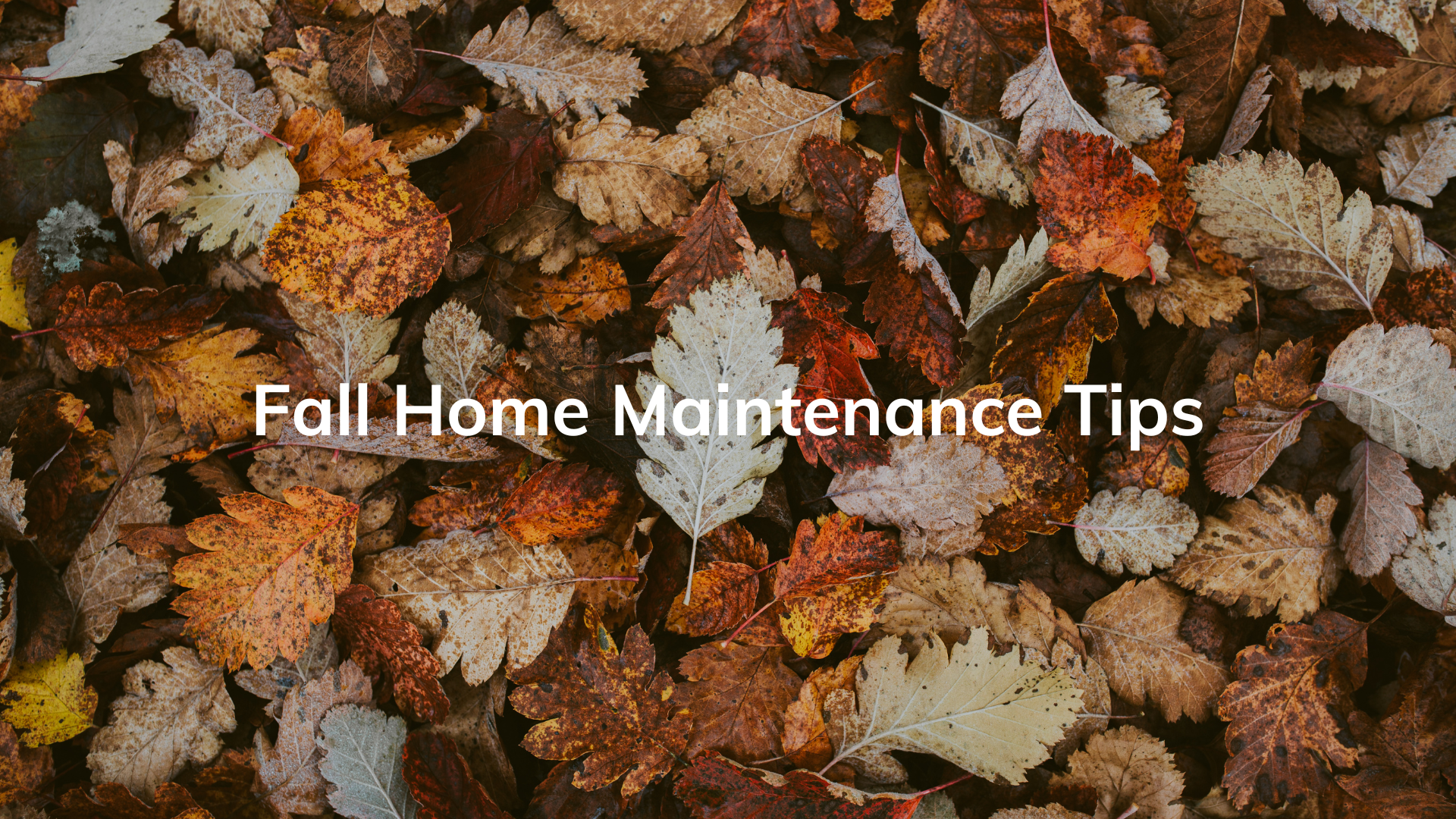As the crisp air of fall sets in, it's a great time to focus on essential home maintenance to ensure your property stays in top shape through the colder months. From preparing your home’s exterior to making sure your heating system is ready, here are some fall home maintenance tips that will help you safeguard your home and save money in the long run.
1. Clean and Inspect Gutters 🍂
Falling leaves can easily clog your gutters, which can lead to water damage or even foundation issues if not addressed. Make sure to:
Clean gutters thoroughly, removing leaves, twigs, and debris.
Check downspouts for blockages to ensure water flows freely.
Consider installing gutter guards to prevent future clogs.
2. Check Your Roof 🏠
Your roof is your first line of defense against harsh weather. Fall is the perfect time to inspect it for any damage or wear before winter storms hit:
Look for missing or damaged shingles.
Check for signs of moss or algae growth, which can cause damage over time.
Consider hiring a professional to assess the overall condition of your roof.
3. Seal Windows and Doors 🪟🚪
Drafty windows and doors can lead to higher energy bills and make your home less comfortable during the colder months. To prevent this:
Inspect the weatherstripping around windows and doors for any gaps or wear.
Apply caulking to seal cracks around windows and door frames.
Consider using storm windows or installing energy-efficient windows if drafts are an ongoing issue.
4. Service Your Heating System 🔥❄️
Before the chill really sets in, it’s important to make sure your heating system is functioning properly. Routine maintenance can also extend the life of your system and improve efficiency:
Replace or clean your furnace filter.
Schedule a professional HVAC inspection to ensure your system is running smoothly.
Test your thermostat to ensure it’s working correctly.
5. Chimney and Fireplace Inspection 🪵
If you have a wood-burning fireplace, fall is the time to prepare it for cozy winter nights:
Have your chimney cleaned by a professional to remove creosote buildup, which can be a fire hazard.
Inspect the damper and ensure it opens and closes properly.
Stock up on firewood and keep it in a dry place.
6. Winterize Outdoor Faucets and Sprinklers 💧
To prevent pipes from freezing and bursting during winter, it's crucial to winterize your outdoor water systems:
Drain and store hoses.
Turn off the water supply to outdoor faucets, then drain the remaining water.
Blow out your sprinkler system to remove any water that could freeze and cause damage.
7. Inspect Insulation and Attic Ventilation 🕵️♂️
Proper insulation can help keep your home warm in winter and reduce energy costs. Now’s the time to:
Check for any gaps or thin spots in your attic insulation.
Ensure that attic ventilation is functioning properly to prevent moisture buildup, which can lead to mold or ice dams.
8. Trim Trees and Shrubs 🌿
Overgrown branches can be a hazard during storms, especially if they hang over your roof or power lines:
Prune trees and shrubs, trimming back any limbs that are too close to the house.
Remove any dead or dying branches to prevent them from falling during a storm.
Consider hiring a tree service for larger trees or more extensive pruning.
9. Check Carbon Monoxide and Smoke Detectors 💨
With more time spent indoors and increased use of heating systems, it’s important to ensure that your home’s safety systems are in good working order:
Replace the batteries in your smoke detectors and carbon monoxide detectors.
Test the devices to ensure they are functioning properly.
If your detectors are older than 10 years, consider replacing them.
10. Test Outdoor Lighting and Security 💡
With the days getting shorter, fall is a good time to check and update your outdoor lighting:
Ensure that motion-sensor lights and security lighting are working properly.
Replace any burnt-out bulbs.
Consider adding additional lighting near walkways or entry points for better safety and security during darker months.
Conclusion
Fall home maintenance is essential to prepare for winter’s harsh conditions. By tackling these tasks early, you can prevent costly repairs, improve energy efficiency, and ensure your home remains comfortable and safe. Investing a little time and effort now will pay off with a warm, worry-free home as the temperature drops.
Ready to tackle your fall maintenance checklist? Start early and enjoy the season knowing your home is ready for whatever winter may bring!
Sources:




